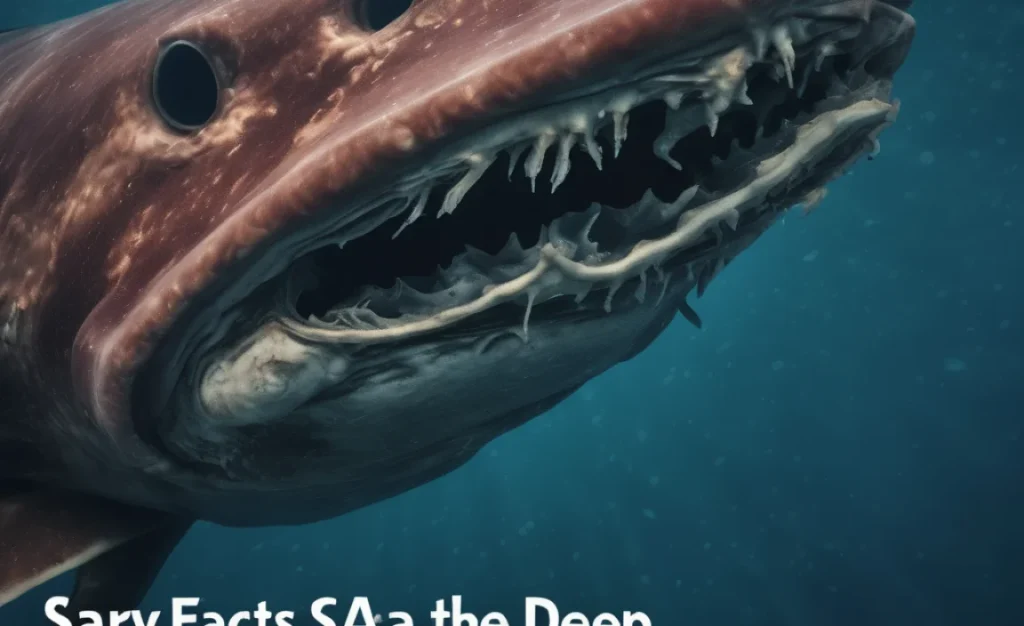The deep sea is a mysterious place! Dark, cold, and vast, it holds many secrets. Did you know that most of the ocean remains unexplored? Imagine what might be hiding down there! From strange creatures to hidden landscapes, it’s a world unlike any other. Are you ready to dive into some scary facts about the deep sea?
Key Takeaways
- The deep sea is mostly unexplored and full of mysteries.
- Scary facts about the deep sea include giant squids and angler fish.
- Extreme pressure and darkness define the deep sea environment.
- The deep sea houses creatures that glow in the dark.
- Deep-sea vents are home to unique, bizarre organisms.
Giant Creatures of the Deep Sea
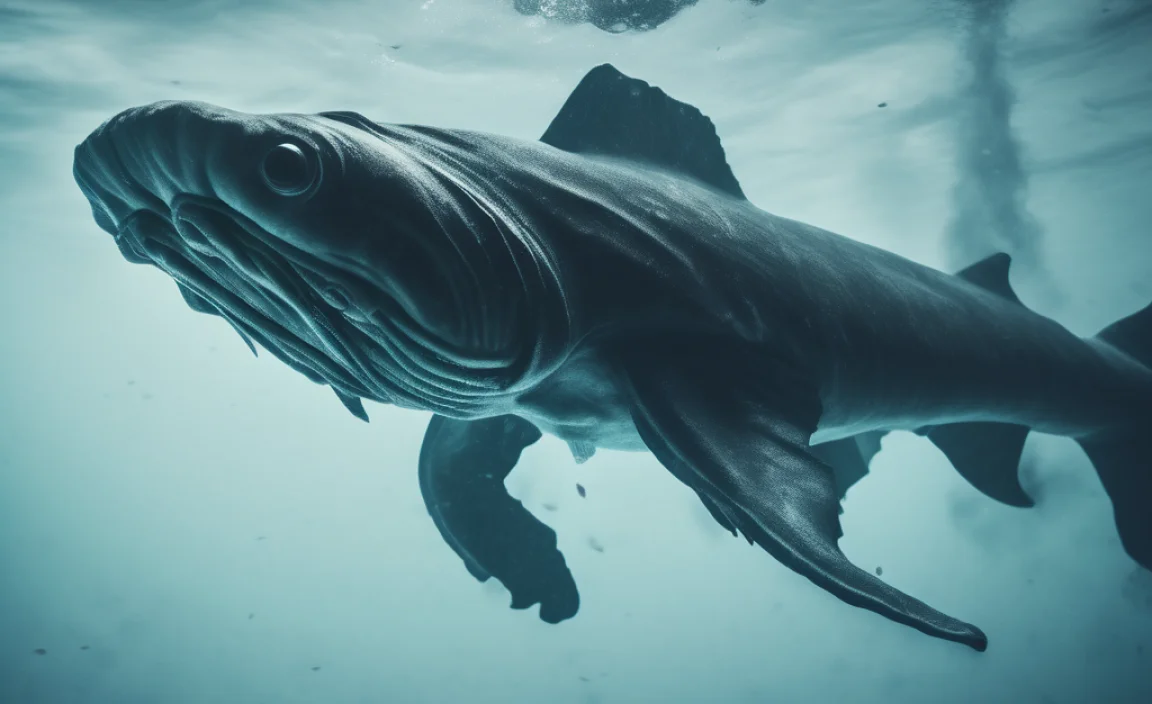
Have you heard of the giant squid? It’s one of the most amazing and mysterious deep-sea creatures. These squids can grow as long as a school bus! They live deep in the ocean where sunlight never reaches. Scientists still know very little about them. They have enormous eyes, perfect for seeing in the dark. Their long tentacles help them catch prey. Imagine being a fish and suddenly seeing those huge tentacles! The idea is both fascinating and frightening. These squids were once thought to be just a myth. But now, we know they’re real!
- Giant squids live deep in the ocean.
- They can grow as big as a school bus.
- They have very large eyes.
- Their tentacles help them catch prey.
- They were once believed to be mythical.
- Few have been seen alive by humans.
- They are fascinating yet scary creatures.
Even though we know they exist, the giant squid remains a mystery. Scientists are still learning about their habits and life in the deep sea. They use special equipment to study these creatures. It’s not easy because the deep sea is hard to reach. But every new discovery is exciting! Who knows what else we might find lurking in the depths of the ocean?
Fun Fact or Stats : A giant squid’s eye can be as big as a dinner plate!
What Makes Giant Squids So Mysterious?
Why are giant squids so mysterious? For a long time, people only knew about them from stories. Sailors talked about seeing large sea monsters. These tales made people curious. But the deep sea is hard to explore. It’s dark, cold, and under a lot of pressure. That makes it tough for humans to go deep enough to see these creatures. Lots of what we know comes from dead squids found washed up on beaches. Scientists use special cameras and submarines to study them now. They hope to learn more about these amazing animals.
How Do Giant Squids Hunt?
Do you wonder how giant squids catch their food? They are skilled hunters of the deep sea. They use their long tentacles to grab fish and other prey. Imagine having long arms that stretch out and catch things from far away! Their tentacles have powerful suckers. These help them hold onto their catch. Once caught, their prey is quickly brought to their sharp beak. Yes, giant squids have beaks, just like birds! It’s a quick and efficient way to eat in the deep, dark waters.
Where Do Giant Squids Live?
Where do these gigantic creatures live? Giant squids inhabit the deep ocean worldwide. They prefer depths where sunlight cannot reach. This makes their habitat dark and cold. The deep sea offers them plenty of food and places to hide. Because it’s hard for us to reach these areas, much about their lives remains unknown. Scientists believe that these squids might be spread across different oceans. Can you imagine a whole world beneath the waves where sunlight never shines?
Strange Light Shows: Bioluminescence
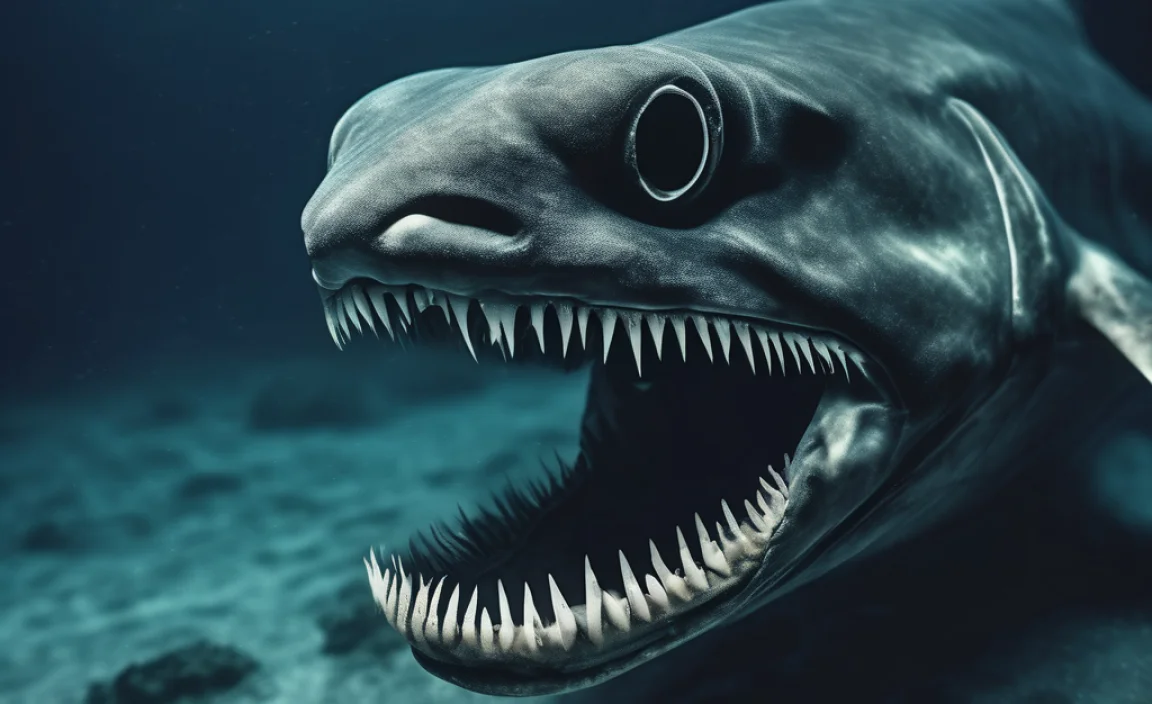
In the dark depths of the ocean, some creatures have a special trick. They can glow in the dark! This amazing ability is called bioluminescence. Imagine swimming through a dark ocean and suddenly seeing tiny lights all around you. These glowing creatures use light for different reasons. Some use it to find food, while others use it to hide from predators. It’s like a natural flashlight. The deep sea is home to many bioluminescent creatures. They make the dark ocean a magical place.
- Bioluminescence means creatures can glow in the dark.
- It helps them find food and hide from predators.
- Creatures like jellyfish and angler fish use it.
- It’s like a natural flashlight in the ocean.
- Bioluminescence makes the deep sea magical.
- Glowing creatures can be found all over the world.
- The deep sea is full of such wonders.
This glowing ability is not just for fun. It’s a way for deep-sea creatures to survive. In the pitch-black ocean depths, light becomes very important. Some fish use it to lure prey into their traps. Others shine bright to scare off attackers. It’s fascinating to think about how these creatures have adapted to their dark home. It shows how amazing and resourceful life can be.
Fun Fact or Stats : The angler fish uses a glowing lure to attract prey.
How Do Creatures Glow?
How do these creatures make their own light? Bioluminescence is a natural process. It happens when certain chemicals mix inside a creature’s body. This reaction creates light. It’s similar to how a glow stick works. Some deep-sea creatures have special organs for this. These organs are like tiny light bulbs. The light can be blue, green, or even red. Each species uses its glow differently. Isn’t it fascinating how nature has created a way for these creatures to light up the dark?
Why Do Deep Sea Creatures Need Light?
Why is light so important for these ocean dwellers? In the deep sea, it’s pitch black. No sunlight reaches those depths. Without light, finding food or avoiding predators is tough. Many creatures use bioluminescence to communicate. Some flash patterns to attract mates. Others use light to confuse predators or sneak up on prey. In such a dark world, having your own light can be the difference between life and death. Isn’t it amazing how life finds a way to adapt?
What Are the Most Common Glowing Creatures?
What creatures light up the ocean depths? Many species can glow. The most famous might be the angler fish. It has a glowing “fishing rod” to catch food. Jellyfish also shimmer in the dark waters. Some squid species use light to blend into the ocean’s surface. There are even glowing shrimp and tiny plankton. These creatures make the deep sea a beautiful, mysterious place. Imagine a whole underwater world twinkling like the night sky!
Deep Sea Pressure: Crushing Forces
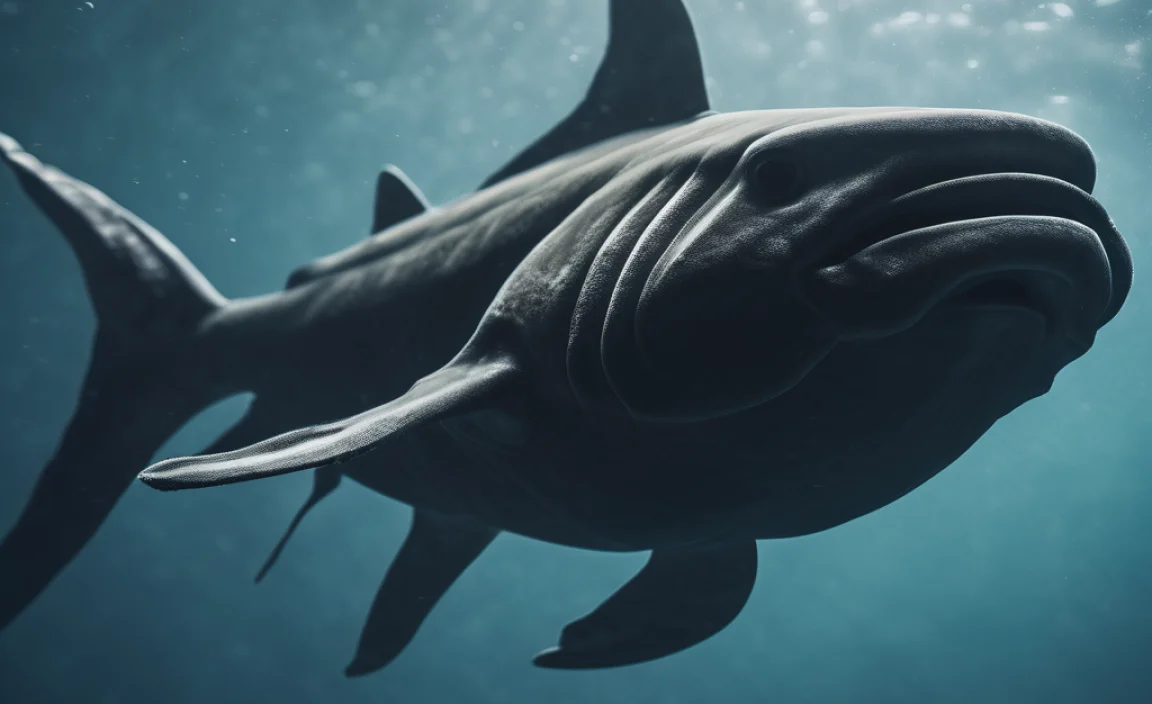
Have you ever dived deep underwater in a swimming pool? Did you feel your ears start to hurt? That’s because of pressure. Now, imagine the pressure in the deep sea is much stronger. It’s like having a hundred elephants standing on you! The deeper you go, the stronger this pressure gets. This is why exploring the deep sea is so hard for humans. Our bodies cannot handle it. But deep-sea creatures have special adaptations. They can live in such extreme conditions. Isn’t that incredible?
- Pressure increases the deeper you go in the sea.
- Deep-sea pressure is very strong and intense.
- It’s like having heavy weights pushing on you.
- Humans struggle to survive under such pressure.
- Deep-sea creatures have adapted to the pressure.
- Special submarines help scientists explore these depths.
- Pressure makes deep-sea exploration challenging.
Exploring the deep sea requires special equipment. Humans use submarines that can withstand the pressure. These submarines are like strong metal capsules. They protect explorers from being crushed. This technology helps scientists discover more about deep-sea life. Understanding how creatures survive this pressure teaches us about adaptation. It also inspires new technology to explore further. The deep sea remains one of Earth’s last frontiers.
Fun Fact or Stats : The deepest part of the ocean is the Mariana Trench.
What Happens Under High Pressure?
What happens to objects under deep-sea pressure? Imagine squeezing a plastic bottle with your hands. The bottle shrinks because of the force. In the deep sea, the pressure is much greater. It can crush submarines if they’re not built strong enough. This is why deep-sea exploration is so challenging. Scientists use special materials to make sure submarines stay safe. Without these innovations, exploring the ocean’s depths would be impossible. Isn’t technology amazing?
How Do Creatures Survive Under Pressure?
How do deep-sea creatures handle such pressure? They have unique adaptations. Their bodies are flexible and strong. This helps them withstand the extreme conditions. Many don’t have air in their bodies like humans do. This prevents them from being crushed. Some have specialized organs to manage pressure changes. These adaptations let them thrive where humans cannot. It’s incredible how life can adjust to almost any environment!
Why Is Deep Sea Pressure Important?
Why does pressure matter in the deep sea? It shapes how creatures live and survive. Pressure affects their size, shape, and behavior. It determines where they can live and what they can eat. Understanding pressure helps scientists learn about the ocean’s ecosystem. This knowledge can lead to discoveries about life on other planets. The deep sea teaches us about Earth’s extremes. It shows us how life persists under harsh conditions.
| Factor | Deep Sea Condition | Impact on Humans | Adaptations in Creatures |
|---|---|---|---|
| Pressure | Very High | Crushing Forces | Flexible Bodies |
| Temperature | Very Cold | Hypothermia Risk | Special Enzymes |
| Light | No Sunlight | Cannot See | Bioluminescence |
| Food | Scarce | Limited Resources | Slow Metabolism |
Cold Temperatures: Icy Challenges
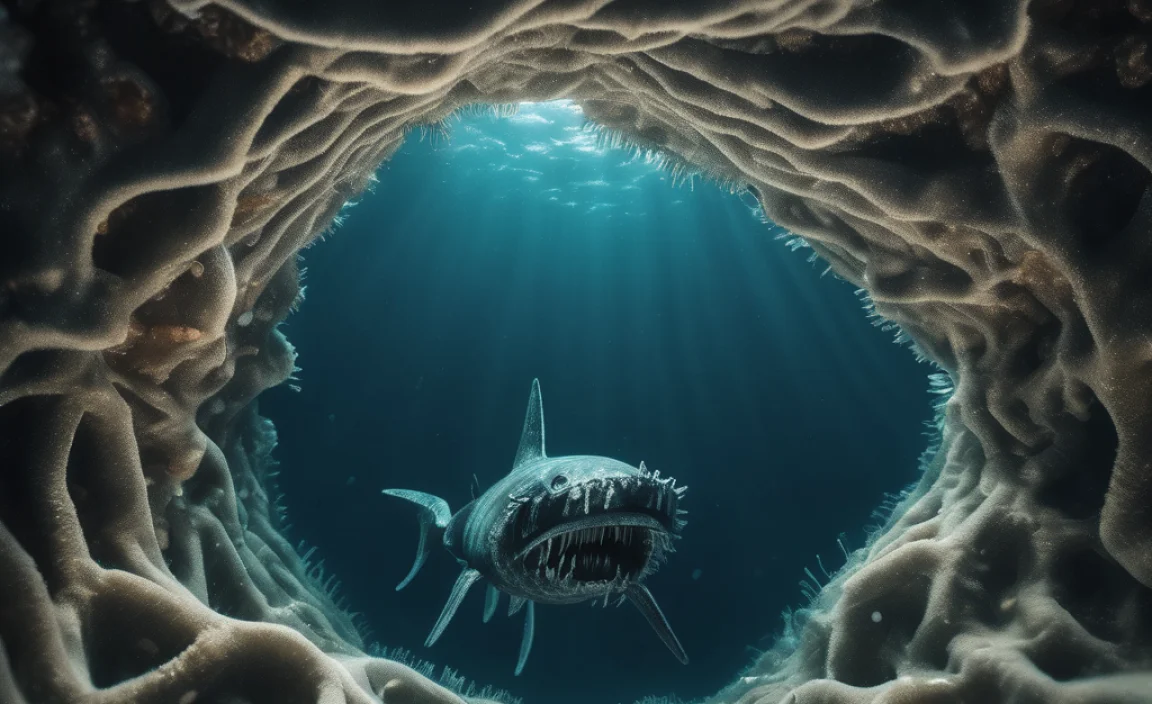
The deep sea is an icy place. It’s so cold that it can freeze almost anything. Temperatures are near freezing, making survival tough. Imagine being in a giant freezer all the time! Yet, many creatures live here. How do they survive? They have special ways to keep warm. These adaptations allow them to thrive in such cold conditions. They move slowly to save energy. This helps them survive in their chilly homes.
- The deep sea is very cold, almost freezing.
- Creatures have adaptations to withstand the cold.
- They move slowly to save energy.
- Cold temperatures make survival hard.
- Food is scarce in these icy waters.
- Special enzymes help creatures survive cold.
- Cold waters are home to unique species.
Deep-sea creatures have special enzymes that work well in cold. They help the creatures move and hunt for food. These enzymes allow them to live where few others can. The cold ocean is a harsh environment, but life finds a way. By studying these creatures, scientists learn about survival in extreme conditions. It shows how tough and adaptable nature can be under pressure.
Fun Fact or Stats : Some deep-sea fish have antifreeze proteins in their blood!
Why Is the Deep Sea So Cold?
Why are deep-sea waters so cold? Without sunlight, the ocean can’t warm up. Sunlight warms the upper layers, but not the depths. This results in icy temperatures. The deeper you go, the colder it gets. Cold water sinks because it’s heavier, forming a chilly blanket over the deep sea. This cold environment affects everything that lives there. It shapes how creatures grow, hunt, and survive. Understanding this helps scientists study ocean life and changes.
How Do Creatures Adapt to Cold?
How do deep-sea creatures handle the cold? They have special adaptations. Many have slow metabolisms to conserve energy. Some have antifreeze proteins in their blood to prevent freezing. Others have thick layers of fat for warmth. These adaptations help them thrive where other creatures can’t survive. It’s fascinating to see how life can adjust to such harsh conditions. These creatures show us the power of nature’s adaptability.
What Is the Impact of Cold on Deep Sea Life?
What does the cold mean for deep-sea life? Cold slows everything down. It affects how creatures move and hunt. With little energy from warmth, they must conserve what they have. Food is also scarce in these chilly waters. Creatures must be efficient hunters. Cold influences their size, too. Some grow slowly, leading to long lifespans. By studying these effects, scientists learn about life in extreme environments. It opens doors to understanding other icy worlds.
Unexplored Depths: Secrets Beneath
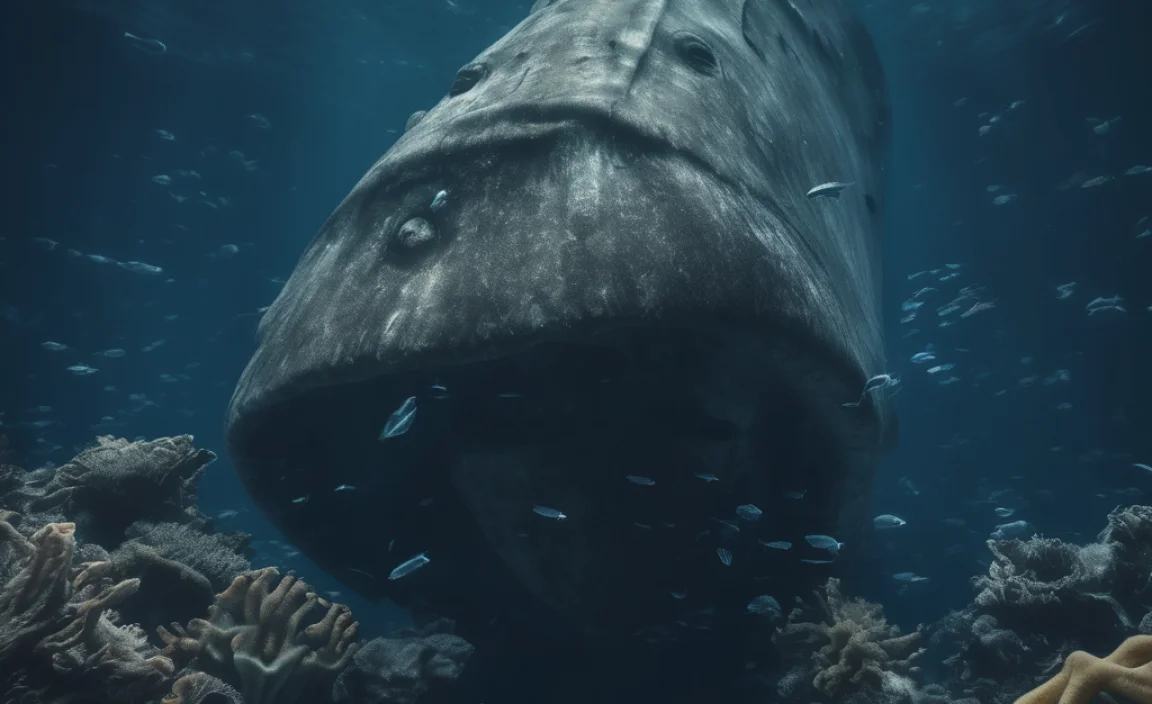
The deep sea is like a hidden world. Most of it remains unexplored. Scientists have mapped only a small part of it. Imagine a giant forest or desert no one has ever seen! The deep sea holds many secrets. Strange creatures and landscapes wait to be discovered. What amazing things might be hiding under the waves? Exploring these depths could lead to discoveries about our planet and beyond. The deep sea remains one of Earth’s last great mysteries.
- Most of the deep sea is unexplored.
- It’s like a hidden world beneath the waves.
- New creatures and landscapes await discovery.
- Scientists have explored only a small part of it.
- Exploration could lead to amazing discoveries.
- The deep sea is a great mystery of our planet.
- It holds secrets about Earth’s past and future.
Exploring the deep sea requires special technology. Submarines and robots explore where humans cannot go. They dive deep, sending back images and data. Scientists study these to learn more about life in the ocean’s depths. Each discovery adds to our understanding of Earth. The deep sea is a vast and exciting frontier. Who knows what else we’ll find as we continue to explore? It’s an adventure waiting to happen!
Fun Fact or Stats : Over 80% of the ocean is still unexplored!
Why Is the Deep Sea Unexplored?
Why haven’t we explored more of the deep sea? It’s tough to reach. The ocean is deep, dark, and under high pressure. This makes exploration difficult. Special equipment is needed. Submarines and robots are expensive to build. Not many people can go on these missions. But technology is getting better. New tools are helping scientists explore more. Each mission brings new discoveries. As technology improves, we’ll learn even more about the deep sea. It’s an exciting time for ocean exploration!
What Might We Discover in the Deep Sea?
What secrets could the deep sea hold? There could be new species waiting to be found. Strange landscapes like underwater mountains and valleys could exist. Scientists might discover new clues about Earth’s history. The deep sea could even hide medicines or materials useful for humans. Every dive is an opportunity for discovery. By exploring the deep sea, we learn more about our planet and the life it supports. It’s a journey that keeps us curious and excited.
How Do We Explore the Deep Sea?
How do scientists explore the deep sea? They use special technology. Submarines and remotely operated vehicles (ROVs) are key tools. These machines dive deep, sending videos and data back to scientists. They are built to withstand high pressure and dark conditions. Scientists watch from the surface, guiding the machines. Every dive brings new information. This helps us understand more about the deep sea’s mysteries. It’s like exploring an alien world right here on Earth!
Conclusion
The deep sea is a mysterious world full of wonders. We’ve uncovered some scary facts about the deep sea, from giant squids to glowing creatures. There’s still so much to learn and explore. As technology improves, we’ll continue to discover more about this hidden frontier. The deep sea reminds us how vast and amazing our planet truly is. Are you ready to dive deep into this fascinating world?
FAQs
Question: What are scary facts about the deep sea?
Answer: The deep sea has giant squids and strange glowing creatures. It’s also very cold and dark. Most of it is unexplored. The pressure is immense, making exploration tough. These elements combined make the deep sea both fascinating and terrifying.
Question: Why is the deep sea so mysterious?
Answer: The deep sea is largely unexplored. Only a small part has been studied. Its harsh conditions, like extreme pressure and darkness, make exploration difficult. As a result, many


